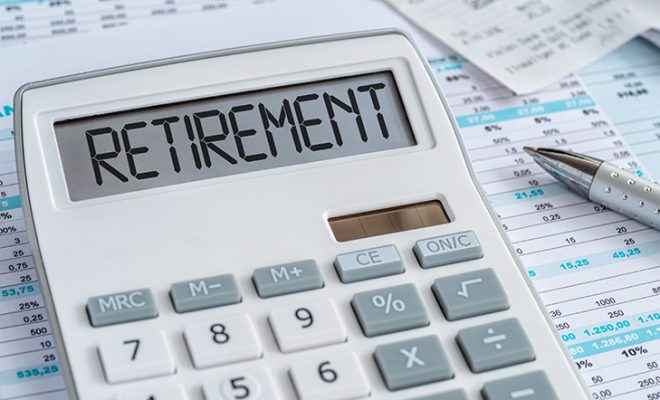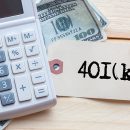How to Quantify the Value of Retirement Accounts

Individual Retirement Accounts (IRAs), 401(k) accounts, Roth IRAs, Roth 401(k)s, pension plans, annuity plans, etc. are some common choices for retirement accounts. Most investors invest in one or many of these accounts to save for their golden years. The cumulative income of these savings acts as their source of income when they retire. Each of these accounts has a limit up to which you can contribute in a year. The withdrawals rules are also unique to each account. However, despite knowing the contribution limits, withdrawal rules, tax benefits, etc., it can sometimes be difficult to quantify the value of your retirement accounts and truly understand how much money you are likely to save up in your retirement pool.
Here’s how to quantify the value of retirement accounts:
- Understand the contribution limits of your retirement accounts
The contribution limits of your retirement accounts can help you comprehend the final value of your retirement savings to a great extent. While these limits fluctuate from year to year and can also sometimes lose their value in the face of inflation, they can still be considered as a base for your retirement calculations. The contribution limits for some of the most commonly used retirement accounts in America for the year 2021 are given below:- IRA: The IRA has an annual contribution limit of $6,000. In addition to this, there is an additional catch up limit of $1000 if you are 50 or older.
- 401(k): The 401(k) has an annual contribution limit of $19,500. In addition to this, there is an additional catch up limit of $6,500 if you are 50 or older.
- 403(b): The 403(b) has an annual contribution limit of $19,500. In addition to this, there is an additional catch up limit of $6,500 if you are 50 or older.
- 457: The 457 has an annual contribution limit of $19,500. In addition to this, there is an additional catch up limit of $6,500 if you are 50 or older.
- Roth IRA: The Roth IRA has an annual contribution limit of $6,000. In addition to this, there is an additional catch up limit of $1000 if you are 50 or older.
- Roth 401(k): The Roth 401(k) has an annual contribution limit of $19,500. In addition to this, there is an additional catch up limit of $6,500 if you are 50 or older.
- Understand the tax liabilities of your retirement accounts
The way each retirement account is taxed can make a considerable difference to your retirement income. This is also one of the primary bases of deciding between a Roth and traditional retirement account. If your total income in retirement is expected to be more, it may be advised to save in a Roth account since the withdrawals are tax free. However, if your current income is higher than you foresee in retirement, it may be advised to consider traditional retirement accounts, as the contributions are made from your pre-tax dollars while the withdrawals are taxed. Make sure you are well aware of the tax rules of all your savings and investments. This will greatly impact your retirement income. - Understand the withdrawal methods of your retirement accounts
While all the funds in your retirement accounts belong to you, the government does levy some restrictions on how they can be withdrawn. In order to enjoy the complete value of your savings, you need to abide by these rules, or else you can be subjected to taxes and penalties. Here are some points to know:- Required Minimum Distributions (RMDs): You need to take RMDs from your retirement accounts on an annual basis when you turn 70.5. The RMDs start the year you turn 70.5 and are mandatory after that. It is important to know the RMD limits of your retirement accounts as failing to withdraw money or making a smaller RMD than required can lead to a penalty. The IRS can charge up to 50% of the money to be withdrawn. The RMD values can change every year and largely depend on your age and the total value of your savings.
- Social Security benefits: While you can start claiming your Social Security benefits at the age of 62, delaying your withdrawals till the full retirement age can enhance your benefits. Waiting till the age of 70 can increase your benefits by 8% every year. Hence, it may help to calculate your full retirement age and delay your withdrawals. This will increase your benefits and offer you more security in retirement.
- Prioritize withdrawals as per their tax liability: In case of multiple retirement accounts, it can be confusing to pick where your withdrawals come from first. A mismatch or lack of prior planning can waste a considerable portion of your funds in taxes. For instance, Roth account withdrawals are tax free; however, if withdrawn earlier, they lose out on future investment opportunities. But not many people consider this aspect. They simply look at the tax liability of an account and make withdrawals keeping in mind their short term tax repercussions.
Hence to fully gain from your retirement savings, instead of only looking at the basics, try to understand the long term repercussions of your withdrawals. Even though traditional IRAs and 401(k)s may be taxable, sometimes they can offer more benefits in the long run than opting for tax free withdrawals. Having said this, the decision is unique to each investor, so you must weigh in all pros and cons of your withdrawals.
- Understand if your accounts are safe from creditors
Creditors, civil lawsuits, or even a divorce can be an unexpected factor to hamper your retirement plans. This is why knowing which of your accounts are safe from creditors is essential. Most employer sponsored retirement accounts under the Employee Retirement Income Security Act (ERISA) are protected from creditors. Hence, in the case of bankruptcy, a creditor would not be able to take control of your retirement savings. In a way, you can count these savings as guaranteed retirement money.
To sum it up
Quantifying your retirement accounts is a complex activity. One that takes time and deep knowledge of the tax system, withdrawal system, contribution limits, and the effect of inflation over the years. While
it is nearly impossible to have the precise estimate of your savings, you can gauge the approximate value and plan your life around it comfortably. The factors mentioned above can be a good way to start estimating the value of your retirement accounts. If you wish to dig deeper, you can consult a professional financial advisor for more information.










